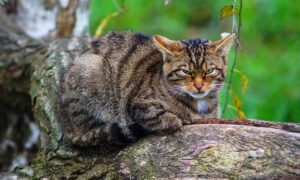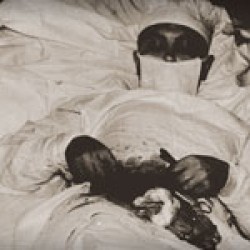The Wildlife Conservation Society (WCS) announced today the discovery of a new monkey in a remote region of the Amazon in Brazil.
The monkey is related to saddleback tamarins, which include several species of monkeys known for their distinctively marked backs. The newly described distinct subspecies was first seen by scientists on a 2007 expedition into the state of Amazonas in northwestern Brazil.
 Researchers have dubbed the monkey Mura’s saddleback tamarin (saguinus fuscicollis mura) named after the Mura Indians, the ethnic group of Amerindians of the Purus and Madeira river basins where the monkey occurs. Historically this tribe was spread through the largest territory of any of the Amazonian Indigenous peoples, extending from the Peruvian frontier today (Rio Yavari) east to the Rio Trombetas.
Researchers have dubbed the monkey Mura’s saddleback tamarin (saguinus fuscicollis mura) named after the Mura Indians, the ethnic group of Amerindians of the Purus and Madeira river basins where the monkey occurs. Historically this tribe was spread through the largest territory of any of the Amazonian Indigenous peoples, extending from the Peruvian frontier today (Rio Yavari) east to the Rio Trombetas.
The monkey is mostly gray and dark brown in color, with a distinctly mottled “saddle.” It weighs 213 grams and is 240 millimeters (9 inches tall) with a 320 millimeter (12.6 inch) tail.
“The Wildlife Conservation Society is extremely proud to be part of this exciting discovery in the Amazon,” said Dr. Avecita Chicchon, Director of WCS’s Latin America Programs. “We hope that the discovery will draw attention to conservation in this very fragile but biodiverse region.”
According to the study’s authors, the monkey is threatened by several planned development projects in the region, particularly a major highway cutting through the Amazon that is currently being paved. Conservationists fear the highway could fuel wider deforestation in the Amazon over the next two decades. Other threats to the region include a proposed gas pipeline and two hydroelectric dams currently in the beginning stages of construction.
“This newly described monkey shows that even today there are still major wildlife discoveries to be made,” said the study’s lead author, Fabio Röhe of the Wildlife Conservation Society. “This discovery should serve as a wake-up call that there is still so much to learn from the world’s wild places, yet humans continue to threaten these areas with destruction.”
Source: WCS












